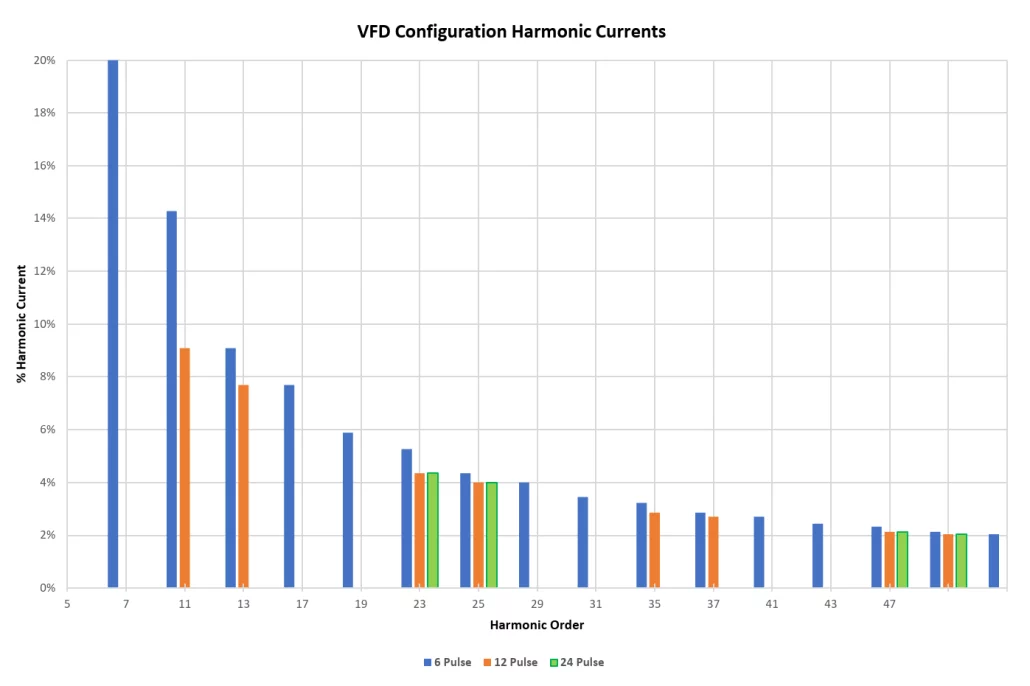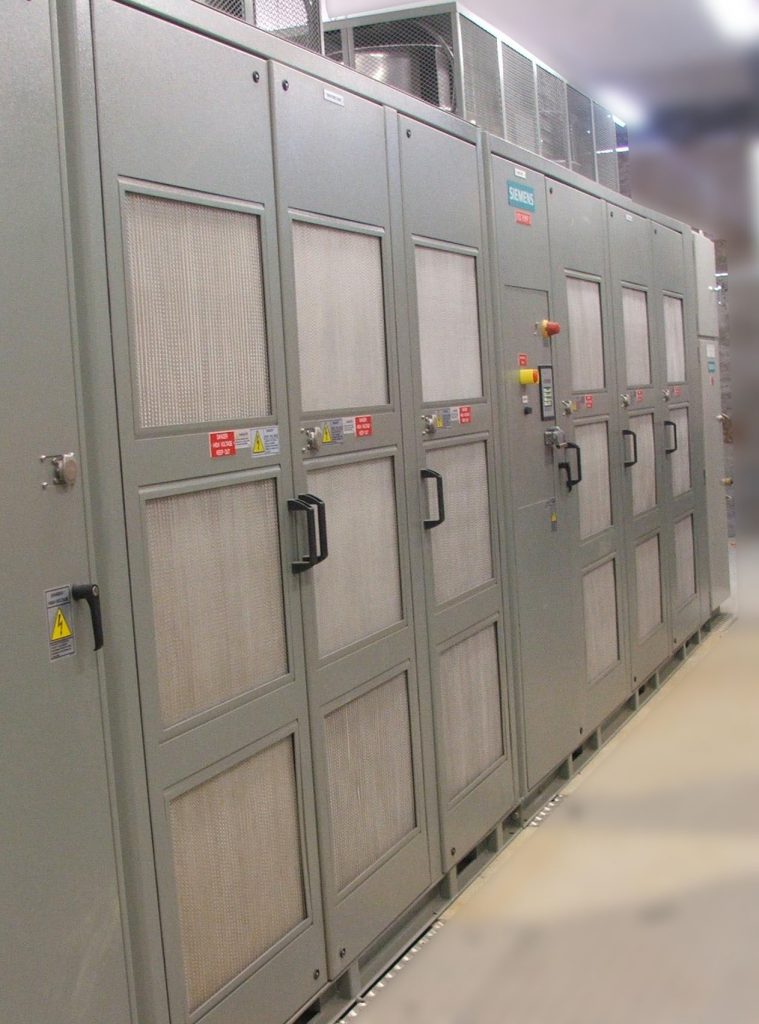What is a Variable Speed Drive?
Variable Speed Drives (VSDs), also known as Variable Frequency Drives (VFDs), are power electronic devices used to control the speed and torque of asynchronous electric motors by varying the frequency and voltage supplied to the motor. While VSDs offer various advantages, they can also introduce some challenges, including the generation of harmonic currents.
In this article, the effects of harmonics on electrical equipment has been discussed.
Variable Speed Drive Rectifier Configuration
The rectifier in a Variable Speed Drive (VSD) or Variable Frequency Drive (VFD) is responsible for converting the incoming alternating current (AC) power from the mains supply into direct current (DC) power. The rectifier is a critical component of the VSD. Different rectifier configurations can influence the level of harmonic distortion in the input current and the overall power quality.
Two common rectifier configurations used in VSDs are:
- Diode Rectifier
- The diode rectifier is the simplest and most basic rectifier configuration used in many VSDs, particularly in smaller and less complex systems. It consists of a diode bridge rectifier that converts the AC voltage into a unidirectional pulsed DC voltage. The diode rectifier introduces significant harmonic currents in the input current, mainly 5th and 7th harmonics for a 6-pulse rectifier configuration.
- Active Front-End Rectifier (AFE)
- The Active Front-End (AFE) rectifier is a more advanced and sophisticated configuration used in medium to large VSDs, especially in applications that demand improved power quality and reduced harmonic distortion. The AFE rectifier employs active switching devices (such as insulated gate bipolar transistors - IGBTs) to control the current flow, allowing bi-directional power flow and smoother DC output. The active control in the AFE rectifier enables it to draw nearly sinusoidal currents from the mains supply, resulting in higher power factor and reduced harmonic distortion. By actively controlling the input current waveform, the AFE rectifier cancels out specific harmonics, typically the 5th and 7th harmonics, and significantly reduces harmonic content.
Comparison of Rectifier Configuration Harmonics
The rectifier configuration of a Variable Speed Drive has a direct effect on the amount of harmonics generated by the equipment. Below table is a comparison of a 6-pulse, 12-pulse and a 24-pulse rectifier configuration.
| Harmonic Order | 6-pulse | 12-pulse | 24-pulse |
|---|---|---|---|
| 5 | 20.0% | - | - |
| 7 | 14.3% | - | - |
| 11 | 9.1% | 9.1% | - |
| 13 | 7.7% | 7.7% | - |
| 17 | 5.9% | - | - |
| 19 | 5.3% | - | - |
| 23 | 4.3% | 4.3% | 4.3% |
| 25 | 4.0% | 4.0% | 4.0% |
| 29 | 3.4% | - | - |
| 31 | 3.2% | - | - |
| 35 | 2.9% | 2.9% | - |
| 37 | 2.7% | 2.7% | - |
| 41 | 2.4% | - | - |
| 43 | 2.3% | - | - |
| 47 | 2.1% | 2.1% | 2.1% |
| 49 | 2.0% | 2.0% | 2.0% |
| %THD | 30.0% | 14.2% | 6.6% |

Conclusion
The choice between a 6-pulse, 12-pulse or a 24-pulse VSD depends on the specific application, the required power quality, and the level of harmonic distortion tolerance in the power system. For applications demanding improved power quality and compliance with harmonic standards, the 24-pulse VSD is a suitable option, however, it comes with higher complexity and cost.
